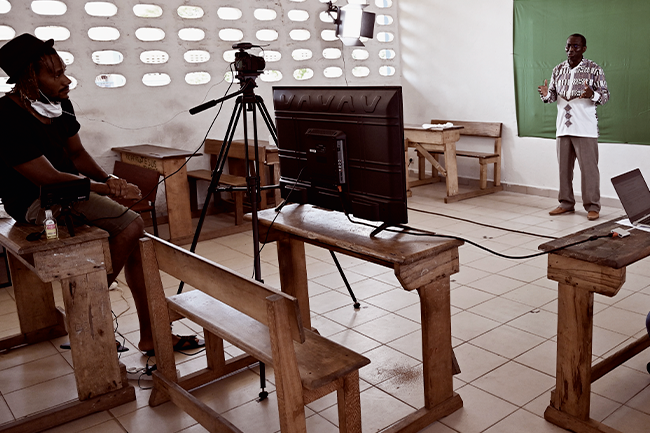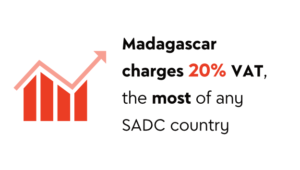The cohort of medical students at the University of Cape Town (UCT) in South Africa was only six weeks into their anatomy practicals when COVID-19 shut down campuses across the continent. Instead of holding a scalpel and conducting dissections in small groups, the second-year students had to study the human body at home, on their own, through video clips and online lectures.
As the pandemic put a temporary stop to all in-person learning, the continent’s public and private education providers scrambled to migrate online.
Some came up with new solutions, such as buying access to the latest anatomy soft ware for medical students to self-study, or partnering with telecos to ‘zero rate’ learning sites. South Africa’s Wits University, for example, signed an agreement with Telkom, MTN, Vodacom and Cell C to waive all data costs for accessing its online library and learning-management sites. UCT provided up to 40 GB of free monthly data to all students with a South African mobile phone number. These two institutions, as well as the universities of Pretoria and Stellenbosch, also lent laptops to students who otherwise would not be able to access online learning.
Online education can be a great equaliser as it gives students in Lagos, Harare or Pretoria access to African and international universities – in their own time, at their own speed, from their chosen location. After all, the World Wide Web doesn’t differentiate whether someone studies from a posh Nairobi suburb or a shack in Kibera.
Yet social inequalities still make it significantly harder for poorer students, because of the cost of data and mobile devices, connectivity issues and the often unconducive home-learning environment. Therefore, the sudden switch to emergency remote learning during COVID came with a list of challenges although, according to Lis Lange, UCT deputy vice-chancellor for teaching and learning, it was the only feasible alternative to salvage the academic year.

While the transition to online education wasn’t easy for students and lecturers, Lange points out that it was an opportunity to practise online skills that would be valuable throughout their careers. ‘The pandemic has jump-started change that would have taken us a year of debate to implement,’ she says.
Even pre-pandemic, there was a growing market for online and distance learning, for degree courses as well as continuous professional learning.
The demand has since multiplied, with the WEF noting in its Future of Jobs 2020 report ‘a four-fold increase in the numbers of individuals seeking out opportunities for learning online through their own initiative, a five-fold increase in employer provision of online learning opportunities to their workers and a nine-fold enrolment increase for learners accessing online learning through government programmes’. Or, in the words of Robert Paddock, founder of business edtech provider GetSmarter and, more recently, a private online high school called the Valenture Institute, ‘the genie [of online learning] is out of the bottle, and there’s no shoving it back in after the pandemic’.
Tomás Burke, chief marketing officer at MasterStart – which, like GetSmarter, offers short online business courses and has partnered with top universities – confirms this trend. ‘The demand for our courses skyrocketed as traditional higher-education campuses ground to a halt with the rapid spread of COVID-19,’ he says. ‘The data we’re seeing across the online learning space indicates that there’s been a massive increase in people upskilling, reskilling and enhancing their career prospects with relevant industry-led courses.’ MasterStart is based in South Africa, but its students (who typically are mid-career professionals, aged 22 to 45) live in Namibia, Botswana, Zimbabwe, Ghana, Nigeria, Kenya, DRC and other countries in Africa and overseas.
This type of flexible, on-demand learning differs strongly from the traditional idea of education, which Burke describes as ‘frontloaded’ – people getting their certification or degree early in life to last them for the rest of their career.
‘Today’s professionals need to continually upskill and adapt to a fast-moving job market,’ he says. ‘There has been an acceleration in universities and other learning providers digitalising their content and rolling out remote delivery. However, the challenge is making that content stick and linking it to real-world problems. Outcomes from simply doing an online course with no human interaction aren’t great, with very few people completing courses, as learners feel isolated and alone. That’s why we’re putting all of our energies into humanising the online-learning experience.’
This reflects concerns voiced by 300 academics from various South African public universities, who signed an open letter outlining the limitations of fully migrating university education to online platforms. ‘In the rush to online teaching, we lost important face-to-face engagement with our students,’ the letter states. ‘Much of what students learn at university does not come from lecture content, but from ongoing interactions with lecturers and tutors, in seminars and workshops, and with the many different people and settings that shape campus life.

‘Our experience of this year [2020] was that online platforms only allowed us to engage in limited, crisis-oriented ways, and with a fraction of our students participating meaningfully in our courses. Many of us also noticed a higher drop-out rate in our classes in the second semester, a sign that the relationships that sustain classrooms were unravelling.’
Most universities in Africa were under-prepared for the abrupt transition to online teaching – not only in terms of their IT infrastructure, connectivity and personalised online support, but also because their teaching and delivery methods as well as the content itself had not been adequately adapted. For instance, student surveys show that video lectures should ideally be broken into five- to 10-minute chunks and contain subtitles and lecture notes. Not all students found live (synchronous) sessions via Microsoft Teams or Zoom useful, preferring to download pre-recorded videos in order to save data and choose the most convenient time.
Even those tertiary institutions that were already well equipped for personal online interactions pre-COVID and had ramped up their support still find that students are eager to return to campus. ‘Our students do like the collegiality of the campus where they can learn together and which is also conducive to studying on their own and communally,’ says Jon Foster-Pedley, dean at Henley Business School Africa.
‘That’s probably been our biggest lesson; that the future of learning will be one that is blended, allowing for the best of virtual and in-person – including students congregating on campus to attend a webinar from a member of faculty who might not even be in the same country.’
He explains that Henley learnt to increase its student assistance by providing coaching for remote learning, writing support and psychological counselling for dealing with life in a pandemic. The crisis inspired the school to launch its first post-grad diploma in management practice for Africa.
‘We’re using virtual reality [VR] to immerse students in a range of African conditions, opening their minds to situations that were very different to anything they had come in contact with before, understanding different business contexts and the needs and concerns of the people who do business there,’ says Foster-Pedley. ‘We are looking at expanding our VR repertoire, partnering with local filmmakers and producers to develop the stock of VR we already have.’
VR could also play a role in online teaching at Stadio, the private-education provider that is invested in Milpark Education, among others.

‘We are experimenting with virtual reality in our offerings across more and more of our schools. However, this is not embedded in our offerings yet,’ says Julian Ribeiro, Stadio head of marketing. ‘The same is true for artificial intelligence [AI] and we will see where opportunities present themselves in the future to use these tools.’
The group reported a 16% increase in the number of distance-learning students (to 28 659) in the 11 months leading up to 31 May 2021. Although contact learning declined by 8% in this period because of COVID, Stadio is still building two ‘mega campuses’ in Centurion and Durbanville, and says there will always be a place for an on-campus offering.
The overwhelming preference is for blended learning, combining the convenience of online learning with the human need for in-person communication. The potential for online education is massive, with VR and AI adding a new dimension to both tertiary and on-demand professional learning.
These new technologies could immerse students in a wide range of disciplines. In health sciences, for example, they could enable students to access virtual 3D dissection tables or simulate real-life surgeries.
Provided governments play their part in the provision of IT connectivity, online learning has the power to democratise – and even revolutionise – higher education on the continent.
By Silke Colquhoun
Images: Gallo/Getty images
















